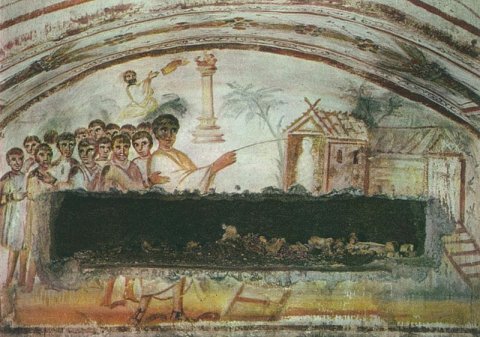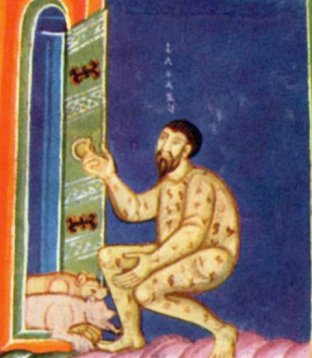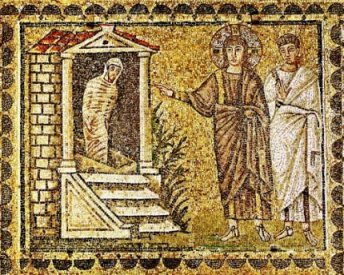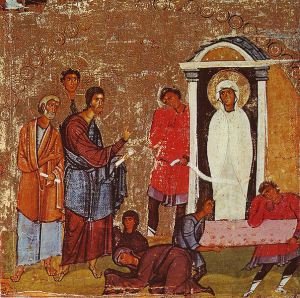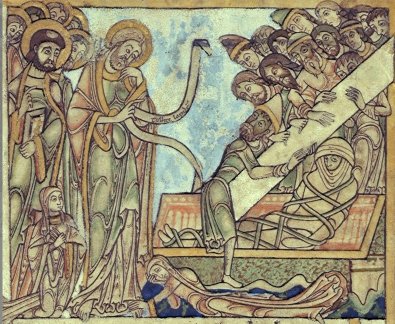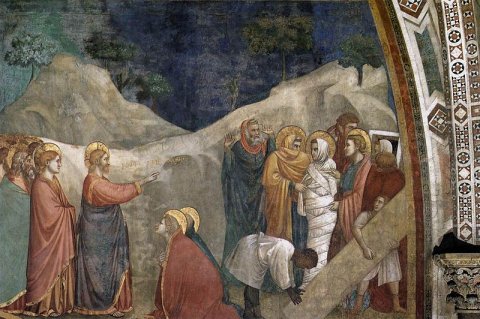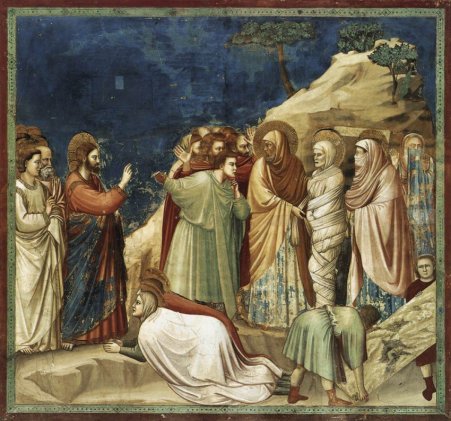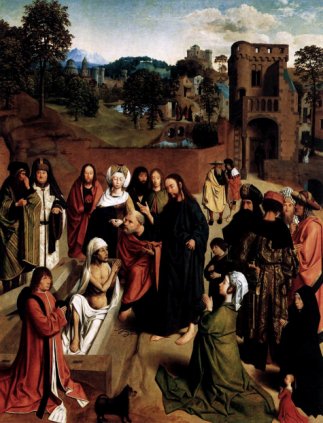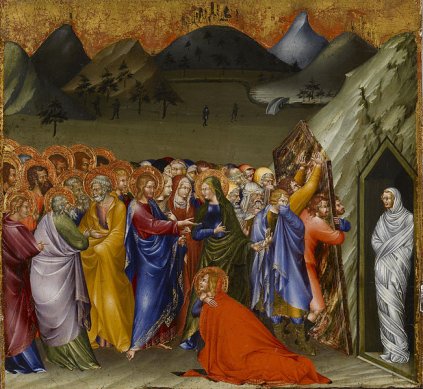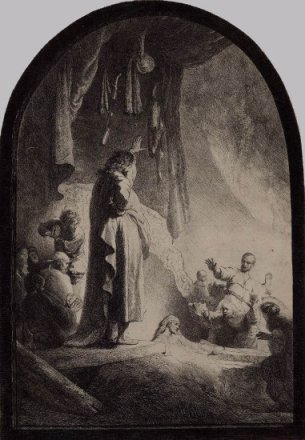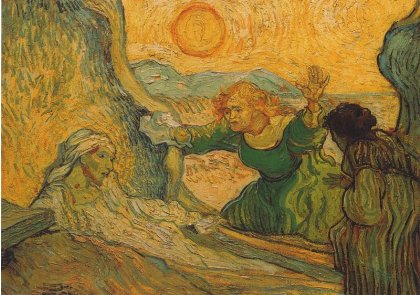|
The Passion of Christ |
|||
|
|
|||
| This event has featured in art from the earliest days of Christianity. This fourth century image comes from the catacombs of Via Latina, Rome; an entirely appropriate subject for a place of burial. | |||
|
|
|||
|
So who was Lazarus? In John's account this is straightforward enough: he was the brother of Mary and Martha of Bethany. But there seems to be more to this character than first appears. First, the name. Lazarus comes from Alazar - Hebrew for 'God has helped'. There are, of course, strong links with lazars, or lepers, who could certainly do with a little help. But this refers to a different Lazarus; the beggar in the parable of Dives and Lazarus in Luke. (Ch. 16) Briefly, after death, the rich man Dives ends up in Hell while Lazarus ends up with Abraham in Heaven. Dives pleads with Abraham to resurrect Lazarus and send him to his father's house, to testify to his brothers that they might repent their evil ways. (Abraham wouldn't). This Lazarus is depicted as having a skin condition, perhaps leprosy. |
|||
|
|
|||
|
A different Lazarus then - or is it? This is much debated by biblical scholars on long wet afternoons. Could the story in John be a garbled retelling of the parable, not a historical event at all? Both stories are concerned with a resurrection of someone called Lazarus. Curiously, both Mark and Matthew have Christ and the apostles visit 'the house of Simon the Leper' in Bethany. An invitation to dinner by a leper seems an unattractive one, and, in view of the outcast nature of lepers, unlikely. Could Simon be a cured leper, thus the friendship with Jesus? There is no biblical record, though, of any such miracle. (The Masks of Christ by Lynn Picket and Clive Prince, goes into all of this and more, with suggestions of secret gnostic intrigues, and the like. Intriguing stuff, and not too Dan Brownish.) 'St. Lazarus' is the patron saint of lepers, and is distinguished in lists of saints from 'St Lazarus of Bethany' - it's not him, they tell us, it's the one from the parable. But hang on a minute - a character in a parable is not a real person. Surely to be made a saint there has to be some suggestion that the person concerned actually existed. My view is that most of the confusion is a product of the Middle Ages. Fascinatingly, the medieval treatment of lepers chimes with the biblical story. Priests performed the Mass of Separation on lepers, which was based on the burial service. In some places, the leper had to stand in an open grave while the Mass was read. Effectively, lepers were numbered among the dead. So couldn't curing a leper be considered a resurrection? |
|||
|
Back to art And about time too, I hear you say. The story has been a popular theme from earliest times, as shown by the first image on this page. So, some early images - and some later ones. |
|||
|
|
|
|
|
| Two by Giotto: | |||
|
|
|
||
|
|
|
||
|
Finally, an etching by Rembrandt: and a tribute to it by van Gogh |
|||
|
|
|
||
